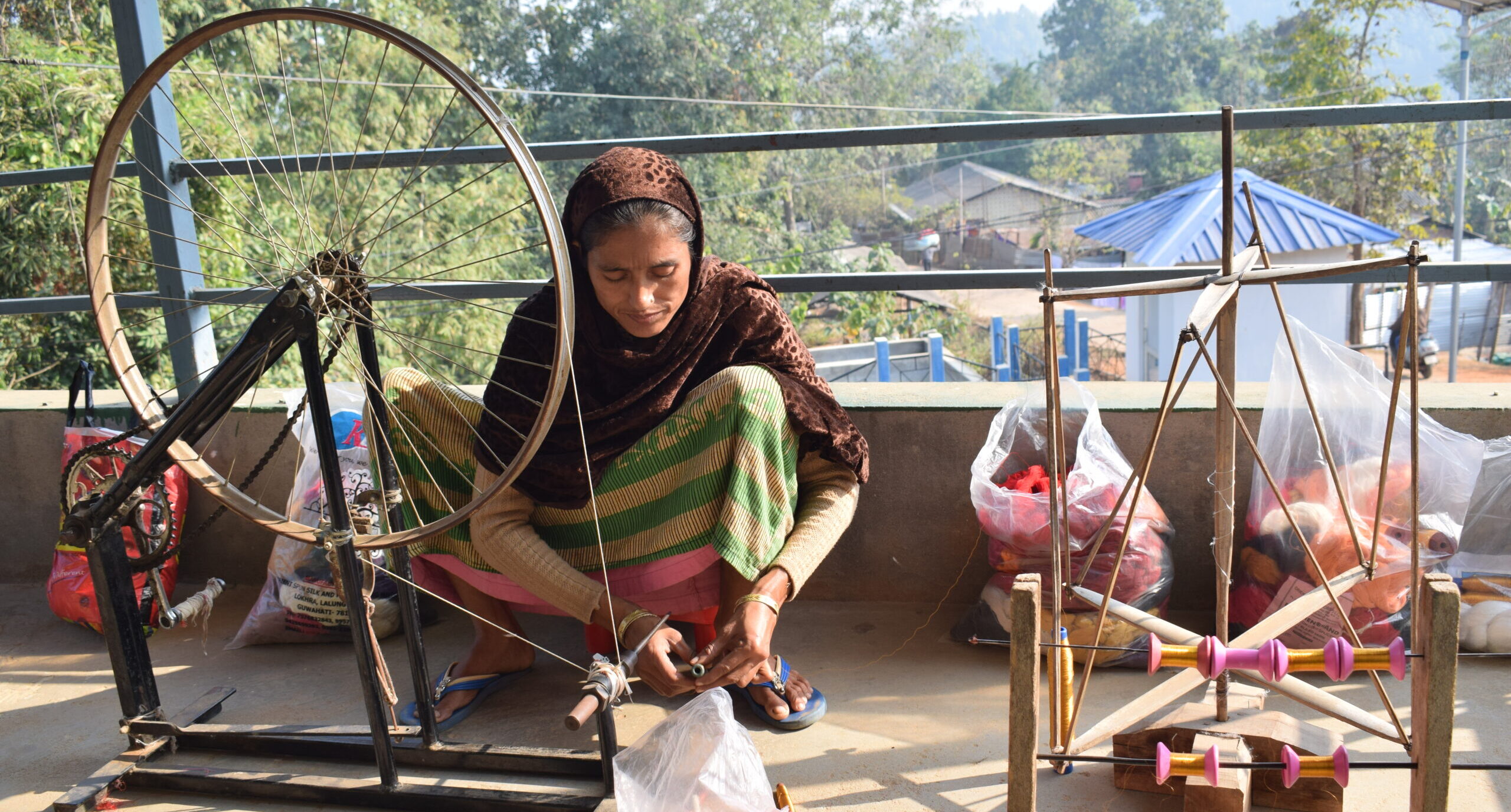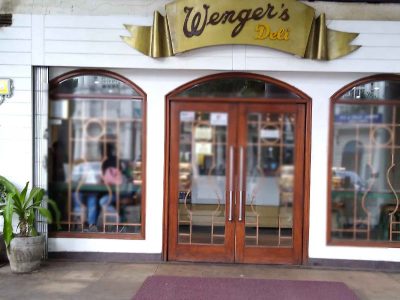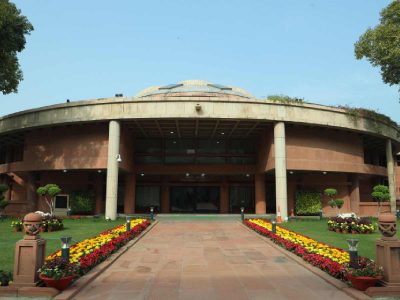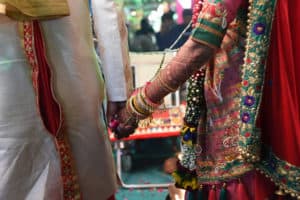“Just another kilometre”, says the man. We are asking for directions to the Umamananda Ghat. The walkway along the Brahmaputra is beautiful but the ‘1 km’ doesn’t seem to bring us to our destination. We have to walk double the distance before finding the ghat from where we can board the ferry to Umananda Island Temple.
By then, we have missed the ferry by minutes. Covid protocols being in place, there is a limit to how many people can go on one ride. We can wait for another hour, or book online and come back the next morning. A tad disappointed, we decide to head to our hotel, the Radisson Guwahati and take our chances the next day.
We had the option of taking the private ferry which charges Rs 100 for a 10-minute ride to the island, but the government one costs Rs 22. There is the ropeway too, but who would want to miss a cruise along the Brahmaputra. And time and money are gold while travelling.
We are here for the North East Festival. Again, Covid had changed the norm, and the festival – usually a grand annual affair in Delhi – had taken a hybrid shape, and only selected guests attended it live in Guwahati. For the others, it was live streaming. But festivals are a good way of getting to know the culture in capsule format. The short tribal dances of these eight beautiful states, namely Arunachal Pradesh, Mizoram, Nagaland, Manipur, Assam, Meghalaya, Sikkim, and Tripura are a super introduction to the local culture. It is three days of music, fashion shows, conventions and cuisine, along with walking around Guwahati.
Along the river shore
Hailed as the Gateway to the Northeast, Guwahati is constantly buzzing. There is never a dull moment along the shores. Around this region are the government offices, museums, parks and the green Brahmaputra Heritage Centre. The sandy shores are quite messy, but I see blooming flowers in this dry sand.
We do manage to get to the Umananda Island finally, very happy to be on this small riverine peacock-shaped island that houses the temple dedicated to Lord Shiva and Goddess Parvati. We enjoy a quick walk around the marked circular trail, have a cup of tea, click pictures, even gulp a platter of fresh pineapple. The fresh fruit platter can be found all along the shore, loaded with dragon fruit, pineapple, bananas, all for Rs 20 only. The sun is a little too strong in the day, but that isn’t going to stop our walk along the shore. We are back on the ghat and head to the Assam State Museum.
Founded by the Kamrupa Anusandhan Samiti, this museum was opened on 21 April 1940 by Sir Robert Reid, the then Governor of Undivided Assam. There are galleries dedicated to epigraphy, sculptures, natural history, art and crafts, anthropology, and folk art & arms.
Then, we cross the road to enjoy some fresh air at the Dighalipukhuri park. This is the hotspot of the city, where family and friends enjoy picnics and boating. Some just hang around. We walk around it to enter the open-air Guwahati War Memorial, which opened for the public in December 2016.
Housing a replica of the ‘Amar Jawan’, it has an army tank donated by the Indian Army and Indian Air Force. The Great Sariaghat Battle between the Mughals and the Ahoms is also portrayed here. There are a few sculptures on a boat showcasing war scenes in water, and scenes from the Kargil war, the attack on Karachi by Indian Navy in 1971 and the Sino-Indian war.
Like soldiers all charged up, we march another 20 minutes and reach the fabulous Mahabahu Brahmaputra River Heritage Centre. Here, the beautiful environs of the old bungalow make war feel like anathema. Under the aegis of Guwahati Metropolitan Development Authority, the entire hillock, along the shores of the Brahmaputra, housing the Deputy Commissioner’s bungalow on top, has been transformed into this heritage centre. It gives a visual feel of life along the river. Art installations, photographs, landscaped gardens, wooden interiors, artefacts and musical instruments, along with the library leave us mesmerised. There is even a play corner for children. And tea in the river garden would have been an idyllic stop, but there was little time left to explore the heart of the city.
Along this belt are the science museum, high court, ropeway to Umananda Island, but all walks must end in a tea shop and that is where we are headed.
Meeting the weavers
On the outskirts of the city are the forests and the wetlands. We drive to Deepor Bil which is a favourite with nature lovers and the holidaying crowd. This freshwater lake is a Ramsar site and home to exotic flora and fauna. It is even an elephant corridor.
We head to the weaving centre, AVA Creations, founded by Anu Mandal and Arup Baishya. The young couple left their hectic city life as their daughter couldn’t handle the pollution. They have now trained the women in the neighbouring villages and are focussed on conservation and boosting the famous handloom industry of Assam. It is a morning well-spent, learning about silk, cocoons, and an eco-friendly way of life. They make gamchas, saris and even layered face masks.
Shopping
Luckily, we are staying in a hotel near the local wholesale market, Paltan Bazaar. That’s where the humdrum is, and we walk around for hours, drinking fresh juices, eating puchkas, browsing through the vendor tables and buying some spices and grains such as black rice, joha, red poha, honey jaggery and pink salt. Paltan Bazaar is for pocket-friendly shopping, but Guwahati has many malls too. We see Rudraksha on the way back to the hotel. And the line-up of glittery cafes and momo vendors is such a temptation on this road.
Local E Tea
Among the most happening malls, is the City Centre Mall. It houses the designer stores and branded cafes. We head to Local E Tea, the chilled out teahouse serving exotic teas and some tribal too. Founded by Vikas Jain, this is an enterprise born out of passion. He serves a large variety of flavoured, herbal and even normal milk tea. Assam is, after all, the land of tea, and black tea is the most consumed beverage in the state.
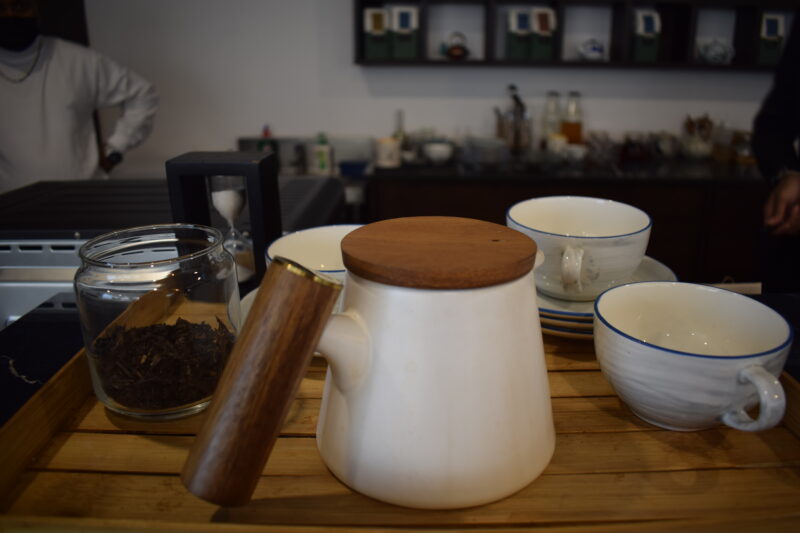
Like the natives, we gorge on tea and yummy pithas, Assam’s favourite snack. These are made of rice flour, jaggery and coconut and are delicious. There are steamed pithas, dry pithas and fried pithas, and we try all of them. Tea tasting here is an art, as we sink in the cool bamboo furniture. The ambience exudes class. MF Husain paintings adorn the walls. Art exhibitions are regularly held here. Jain loves tea and serves it in style too.
The exotic varieties here include Bai-Mu-Dan Original White Tea, Khasi Highland Organic Black Tea, Phizen-Manipur Tribal Wild Forest Black Tea, Siang Golden Tippy Orthodox, and more. These are served by a tea curator in glass and ceramic tea sets. You can even buy these teas and tea sets. The teas come with soft and fresh pithas,
We loved the flavoured kombuchas that our host gifts us. This has lately become my favourite fermented drink, after black carrot kanji.
And then, through the chaotic roads of Guwahati, we head to the airport, stuffing the kombucha bottles in our suitcases.
(This trip was arranged for the media by the North East Festival organiser)
For more stories that cover the ongoings of Delhi NCR, follow us on:
Instagram: https://www.instagram.com/thepatriot_in/
Twitter: https://twitter.com/Patriot_Delhi
Facebook: https://www.facebook.com/Thepatriotnewsindia

